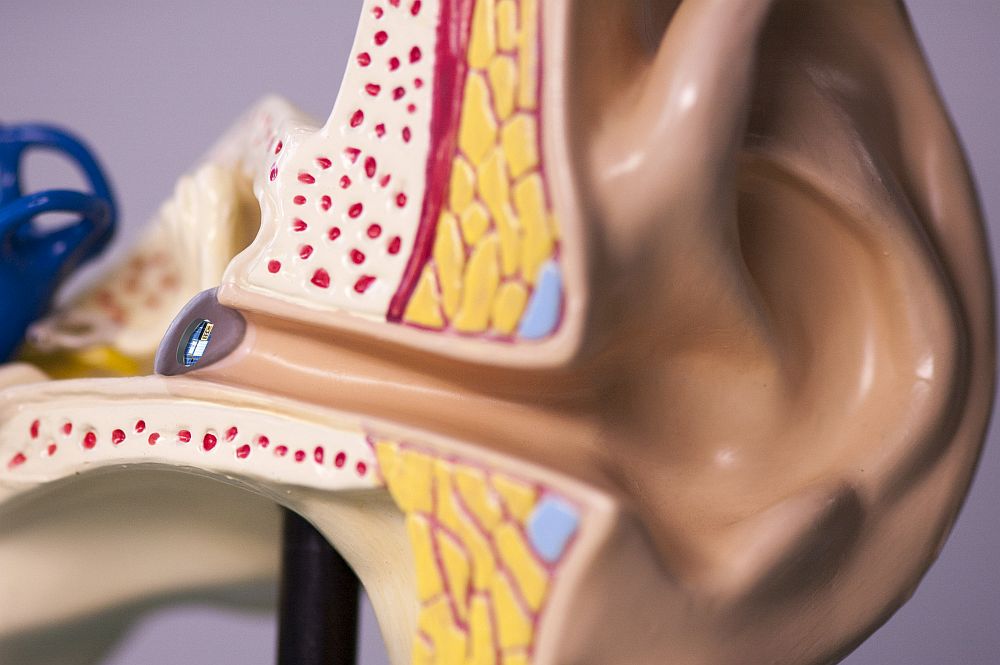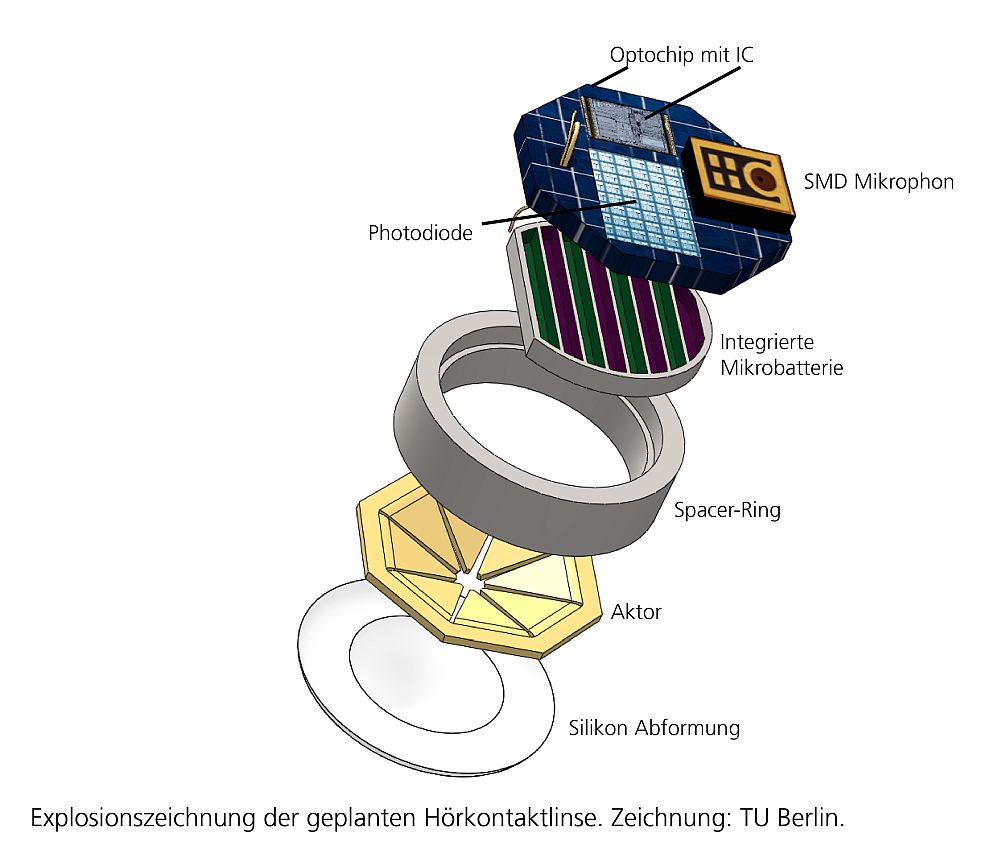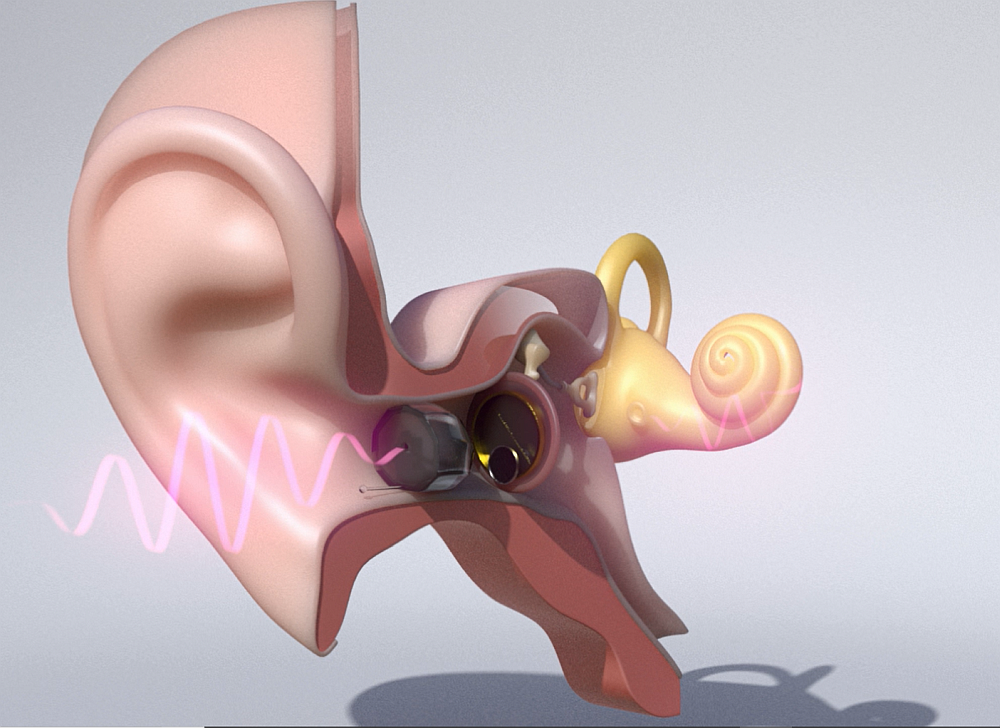A world first: German researchers developing a contact lens for the ear drum
- 85 percent of hearing impaired people set to benefit from the new hearing contacts
- The novel hearing aid is placed directly and invisibly on the wearer’s eardrum
- VDE expects the product to be launched in Germany in 2021
- Microsystems engineering paves the way for the hearing aids of the future
Impaired hearing and deafness are an age-old and universal affliction. The number of sufferers increases as the population ages: From age 70, one in every three people is expected to suffer from hearing loss of 35 decibels or more. German researchers have developed a new generation of hearing aids to address this challenge. Klaus-Dieter Lang, Director of the Fraunhofer Institute for Reliability and Microintegration IZM explains: “The hearing contact lens is a true innovations in the purest sense: In the place of a traditional speaker, we are placing a rechargeable micro-actuator invisibly onto the patient’s ear drum itself”. Hans-Dieter Borowsky, CEO of auric Hörsysteme, the company coordinating the project, believes that the new technology will solve a crucial problem for all people suffering from hearing loss: To follow spoken language, in quiet as much as in noisy surroundings. The visionary hearing aid has recently been introduced to the wider public at the Microsystems Engineering Congress hosted by the German Association for Electrical, Electronic, and Information Technologies VDE and the Federal Ministry of Education and Research in Berlin.
No batteries to replace
The hearing contact has been developed specifically for people suffering from slight to medium loss of hearing (covering approx. 85 of all patients). Traditional hearing aids often struggle with the unique acoustic properties of the body of air trapped in the ear canal, leading to feedback and distortion. The hearing contact avoids this by placing the microphone, audio processor, and rechargeable micro-batteries directly in the tiny disc-shaped device itself: the hearing aid can stay in the ear, and no batteries need to be replaced.
New sound converter for a better hearing experience
Vibrosonic GmbH has developed an innovative piezo actuator for the new hearing contact, creating an ultrathin electroacoustic transducer that is placed onto the ear drum’s membrane itself. It enables the wearer to hear a broader acoustic spectrum and achieve better directional hearing, as both the input microphone and the output sound are located in immediate vicinity of the body’s original sound receiver.
Power supplied by an innovative micro-battery
A revolutionary micro-battery has been developed to supply the hearing contact with power, as traditional rechargeable battery would be far too large for use in the miniscule device. The micro-batteries used by Vibrosonic GmbH are formed by thin silicon wafers on a glass carrier. “Thin-film batteries have been an established technology for several years already, but their thinness severely impacts their capacity. At one square millimetre in size, the battery provides around ten µAh of power”, Dr Robert Hahn, Group Leader at the Fraunhofer IZM, explains.
Market launch in Germany scheduled for 2021
Clinical trials of the new hearing contacts are set to begin with approx. 20 patients, and the developers expect their work to receive the CE certification required for medical devices by summer 2020. This would put the product on schedule for a German market launch in 2021, followed by other European countries. “The successful cooperation of the many partners involved in the project has enabled us to produce an innovative solution that is set to cause a stir far beyond Germany’s borders. With the hearing contact, Germany keeps its world-leading position in microsystems engineering”, believes Klaus-Dieter Lang, honorary VDE expert and chairman of the Microsystems Engineering Congress.
The project team
The following partners contributed to the project:
- auric Hörsysteme GmbH & Co. KG
- Vibrosonic GmbH
- University of Tübingen, ENT Clinic Tübingen
- Fraunhofer IPA
- Research Centre of Microperipheric Technologies at the TU Berlin
- Fraunhofer IZM
Last modified:
 Fraunhofer Institute for Reliability and Microintegration IZM
Fraunhofer Institute for Reliability and Microintegration IZM

